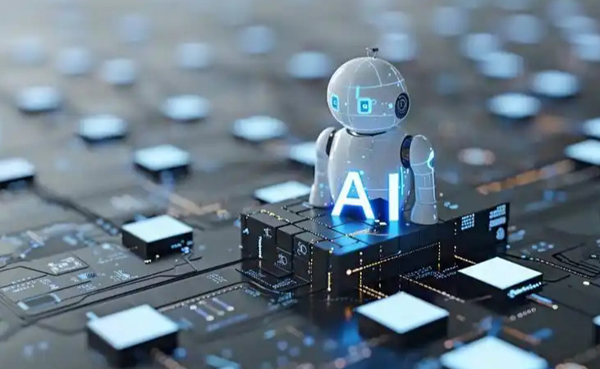What is AI? Definition and core technology of AI

AI simulates human intelligence through machine learning, deep learning and other technologies, and is widely used in the fields of medicine, finance, manufacturing, transportation, etc. In the future, it will continue to innovate and expand application scenarios, but it also faces ethical and legal challenges, and needs to build a harmonious symbiotic relationship between humans and AI.
In today's era of rapid technological development, artificial intelligence (AI) has become an important force in promoting social progress and economic development. So, what is AI? This article will explore the definition, core technology, wide application and future development trends of AI in depth, presenting readers with a comprehensive and in-depth picture of artificial intelligence.
1. Definition of AI
Artificial Intelligence (AI) refers to the ability of machines to "think" and "learn" like humans. It is a technology that simulates human intelligence, enabling machines to learn, think and make decisions like humans, so that they can perform various tasks autonomously. AI is not just a single technology, but a comprehensive field covering a variety of technologies and algorithms, including deep learning, machine learning, computer vision, natural language processing, etc.
2. Core technologies of AI
1. Machine learning
Machine learning is one of the core technologies of AI, which enables machines to learn from data and improve performance without explicit programming. By training models, machine learning algorithms can identify patterns and regularities in data, and thus make predictions or decisions about new data. For example, in the field of image recognition, machine learning algorithms can learn to recognize different objects and scenes by analyzing large amounts of image data.
2. Deep learning
Deep learning is a subfield of machine learning that processes complex data based on neural networks (especially deep neural networks). Deep learning algorithms can automatically extract features from data and make high-level abstract representations by imitating the working mode of neurons in the human brain. This has enabled deep learning to achieve remarkable results in image recognition, speech recognition, natural language processing and other fields.
3. Computer vision
Computer vision is an important application direction of AI, which enables machines to "see" and "understand" image and video content like humans. Computer vision technologies include image recognition, target detection, image segmentation, etc., and are widely used in security monitoring, autonomous driving, medical image analysis and other fields.
4. Natural language processing
Natural language processing (NLP) is another important application direction of AI, which enables machines to understand and generate human language. NLP technology includes text classification, sentiment analysis, machine translation, dialogue systems, etc., and is widely used in intelligent customer service, search engines, intelligent writing and other fields.
III. Wide application of AI artificial intelligence
1. Healthcare
In the healthcare field, AI technology is widely used in disease diagnosis, assisting doctors in decision-making, and drug development. For example, AI can assist doctors in early cancer screening by analyzing medical imaging data; accelerate the development of new drugs by simulating the binding process of drug molecules and targets.
2. Financial services
In the field of financial services, AI technology is used in fraud detection, credit assessment, customer service, intelligent investment consulting and risk management. For example, AI algorithms can analyze financial data to identify patterns and make predictions, helping companies improve risk management; through intelligent customer service systems, provide 24/7 personalized service experience.
3. Manufacturing
In the manufacturing field, AI technology is widely used in production planning, quality control, robotic automation, predictive maintenance and fault detection. For example, AI can optimize production plans to improve production efficiency by analyzing production data; through intelligent robots, efficient operation of automated production lines can be achieved.
4. Transportation
In the field of transportation, AI technology is used in route planning, traffic flow management, and autonomous driving. For example, AI can provide drivers with optimal route planning by analyzing real-time traffic data; and improve the safety and efficiency of road traffic through autonomous driving technology.
IV. Future prospects of AI artificial intelligence
1. Technological innovation and development
With the continuous improvement of computing power and the continuous optimization of algorithms, AI technology will continue to innovate and develop. For example, the emergence of emerging technologies such as quantum computing will provide AI with more powerful computing power; the development of multimodal fusion technology will enable AI to better understand the complex world.
2. Expansion of application scenarios
AI technology will continue to expand its application scenarios and go deeper into more industries and fields. For example, in the field of agriculture, AI technology will be used in precision agricultural management, pest and disease prediction, etc.; in the field of education, AI technology will realize the customization of personalized learning paths and intelligent tutoring.
3. Ethical and legal challenges
With the widespread application of AI technology, ethical and legal challenges are becoming increasingly prominent. For example, how to ensure the fairness and transparency of AI systems? How to protect personal privacy and data security? How to formulate appropriate laws and regulations to regulate the application of AI technology? These issues require the joint attention and resolution of all sectors of society.
4. Symbiotic relationship between humans and AI
In the future, humans and AI will form a closer symbiotic relationship. AI will become an important assistant in human life and work, helping humans solve complex problems, improve work efficiency and quality of life. At the same time, humans also need to constantly learn new knowledge and new skills to adapt to the new era of symbiosis with AI.
V. Conclusion
Artificial intelligence (AI) is a cutting-edge science and technology that allows machines to simulate, extend and expand human intelligence. It uses machine learning, deep learning, computer vision, natural language processing and other technical means to realize the processing and analysis of complex data, and has been widely used in medical health, financial services, manufacturing, transportation and other fields. In the future, with the continuous innovation and development of technology, AI technology will continue to expand its application scenarios and bring more convenience and value to humans. At the same time, we also need to pay attention to the ethical and legal challenges brought by AI technology and jointly build a harmonious symbiotic relationship between humans and AI.













